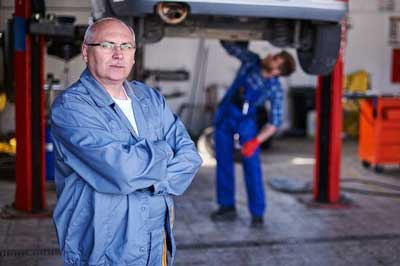- Advertising
- Bare Metal
- Bare Metal Cloud
- Benchmarks
- Big Data Benchmarks
- Big Data Experts Interviews
- Big Data Technologies
- Big Data Use Cases
- Big Data Week
- Cloud
- Data Lake as a Service
- Databases
- Dedicated Servers
- Disaster Recovery
- Features
- Fun
- GoTech World
- Hadoop
- Healthcare
- Industry Standards
- Insurance
- Linux
- News
- NoSQL
- Online Retail
- People of Bigstep
- Performance for Big Data Apps
- Press
- Press Corner
- Security
- Tech Trends
- Tutorial
- What is Big Data
3 Real-Live Big Data Success Stories That Prove You Can Make It Happen
Have you been sitting on the sidelines, waiting to see whether others achieved that promised success with big data, or instead fell flat on their faces? Still not sure exactly how big data could be put to good use in your organization? We have assembled three real life scenarios, all drastically different from one another, to show you what big data is actually accomplishing. Here are three use cases where big data is proving its ability to generate considerable ROI.

Have you been sitting on the sidelines, waiting to see whether others achieved that promised success with big data, or instead fell flat on their faces? Still not sure exactly how big data could be put to good use in your organization? We have assembled three real life scenarios, all drastically different from one another, to show you what big data is actually accomplishing. Here are three use cases where big data is proving its ability to generate considerable ROI.
1. Dickeys Barbecue Pit

When you think of barbecue restaurants, you probably think of ribs and sauces and smoky flavors, but big data likely doesn’t jump to mind. Yet the owners of Dickeys Barbecue Pit, a Texas-based, home-grown family business established in 1941, has found that big data can improve their competitiveness and profitability while bolstering their supply chain, restaurant training and operations, and customer service levels.
Dickeys collects data from the points of sale at each of their 514 restaurants around the US, as well as all data coming in from marketing promotions, loyalty programs, customer service points of contact, inventory, and more. The data is analyzed every 20 minutes and is reviewed each morning at their corporate headquarters. This means that if sales drop at a particular restaurant, they can deploy help in terms of training or operations immediately.
Also, if a certain menu item didn’t sell as well as expected at lunch, they can send out a local text advertising a special on that item for dinner. Say a bus full of high school football players drops by and runs them low on food—they can deploy a delivery truck to restock the restaurant before customers are turned down. The big data also helps Dickeys choose what menu items to include at which restaurants according to what sells well in that area. Their competitors not using big data are at a distinct disadvantage.
2. Tesla Motors

Aside from using data to automate their manufacturing facilities, automotive manufacturers have been slow to adopt and leverage big data. Well, maybe not as slow as barbecue restaurants, but slow enough. All, that is, except for Tesla, the manufacturer specializing in electric vehicles. Tesla is growing by leaps and bounds, leaving its larger, older competitors behind ... coughing on Tesla’s proverbial dust.
Tesla uses big data both to build and improve its vehicles, as well as improving their customer service. When compared to other manufacturers offering similarly priced vehicles, Tesla’s customers are consistently happier and rated more likely to purchase from them again. Each of their vehicles are outfitted with sensors that send information back to the manufacturer on performance, mechanical issues, and more. The manufacturer can then address problems before those even become an issue for their customers. Since Tesla interacts with their customers and vehicles directly, not through middlemen at dealerships, they get all of their automotive and customer data first hand. Even in a market where their product has distinct competitive disadvantages (an electric vehicle with a comparatively low range between recharges), Tesla still manages to impress.
3. Dr. John Halamka, CIO of Beth Israel Deaconess Medical Center
This story is a bit different from the others, but will most assuredly make the benefits of big data adoption and use more meaningful. Dr. John Halamka, the CIO of Beth Israel Deaconess Medical Center, found out in 2011 that his wife had Stage III breast cancer. Dr. Halamka uses big data a lot for his work, both at Beth Israel and with Harvard hospitals, so he knows what it is capable of.
He did his own data analysis using data from all of the different Harvard hospitals in the network. Searching data relative to patients similar in age, ethnicity, and diagnosis to his wife, he determined how those patients were treated, what the side effects of the treatments were, and what the outcomes were. He was then able to help determine the best course of treatment for his wife, who has since recovered fully.
Whether your business is saving lives, saving the planet with green technologies, or just saving a good dinner from going to waste, big data can help. These stories prove it!
Readers also enjoyed:

8 Trends in Cloud Computing & Big Data to Watch in 2016


Leave a Reply
Your email address will not be published.